
Recently, ARM launched the Cortex-A77 CPU core and the Mali-G77 GPU core. As we know, ARM cores have always been the foundation of mobile platforms for Huawei, Samsung, and Qualcomm. Although both Samsung and Qualcomm are actively developing their own CPUs or GPUs, they still rely on ARM.
It is foreseeable that these two cores will have a significant impact on smartphone processors in 2020, especially on flagship SoCs that many people are concerned about. Today, I (Xiao Lei, WeChat: leitech) will provide an in-depth analysis to see just how powerful these two cores are.
1
Cortex-A77: Not Much Change
ARM has introduced a new microarchitecture from last year’s Cortex-A76, which has been retained in the A77. For mobile chip developers, upgrading from the A76 SoC to the A77 will be simpler and faster. Therefore, it still uses the DynamIQ shared unit and forms a cluster with the Cortex-A55 small cores.
The basic configuration of the Cortex-A77 is not much different from that of the A76. For example, in terms of cache size, both are almost identical, with 64KB L1 and 256/512KB L2. It is still produced using a 7nm process, although some chips may use the 7nm+ (EUV) process.
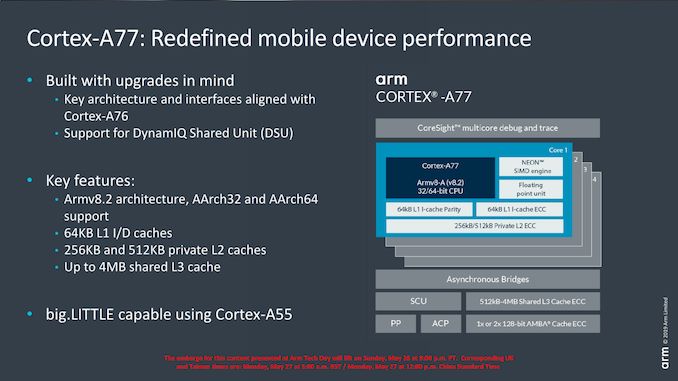
Relatively speaking, the upgrade point of this core is mainly in performance. In terms of performance, the A77 has improved by 20% over the previous generation, with the frequency itself not changing much, still peaking at 3GHz. The performance improvement is mainly related to detailed changes.
Therefore, it can be expected that next year, the improvements in the CPU section from major manufacturers will not be significant. This mainly depends on the manufacturing process not having a corresponding significant upgrade, and flagship devices consuming far more GPU resources than CPU.
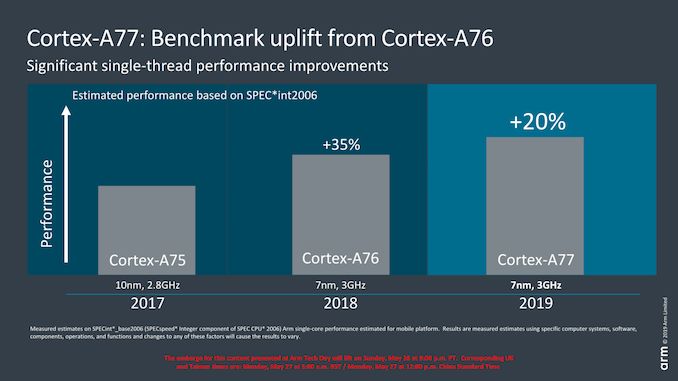
Thus, if manufacturers want to create differentiation in benchmark scores, they can only adjust the entire SoC architecture, such as enhancing the frequency of two large cores in the currently popular three-cluster architecture.
2
Mali-G77: The Era of Mali’s Comeback
For a long time, ARM’s Mali series GPUs have been perceived as having relatively average performance. Whether adopting the high-frequency low-core model represented by Huawei or the low-frequency multi-core scheduling model represented by Samsung, it has been difficult to achieve a satisfactory performance experience.
This is also the reason why self-developed GPUs from Apple and Qualcomm have always held an absolute advantage in benchmark scores.However, ARM’s latest Mali-G77 finally shows a trend of resurgence.
Compared to the A77, which inherits and continues the A76 architecture, the Mali-G77 has for the first time abandoned the Bifrost architecture used for several generations and adopted a completely new Valhall architecture.
ARM states that the Valhall architecture features a new ISA and compute core design, which is designed to be closer to solutions from other GPU vendors.
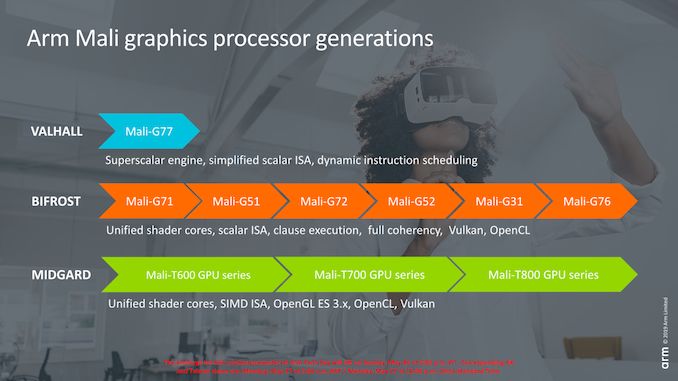
Based on this, the Mali-G77 has improved energy efficiency and area density by 30% compared to the G76, and the performance of GPU machine learning workloads has increased by 60%.
In terms of performance, the Mali-G77 has improved by 40% compared to the previous generation. Therefore, it can be expected that the GPU performance of platforms such as Samsung Exynos and Huawei HiSilicon Kirin will become one of the main selling points.
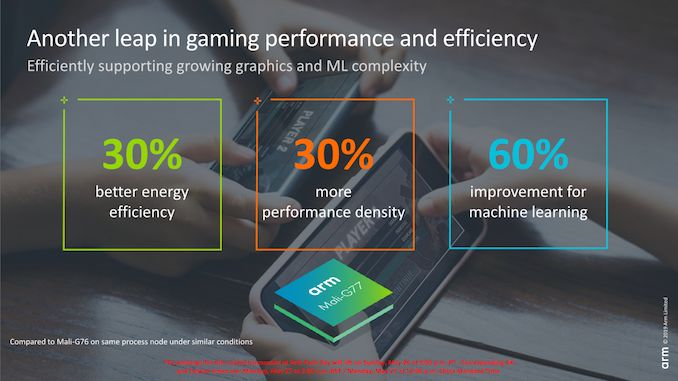
This means that platforms that previously did not have an advantage in GPU performance are likely to significantly close the gap with Qualcomm, assuming the latter does not significantly improve GPU performance.
3
Aligning with New Trends, GPU Performance Will Be the Focus of Improvement
This year, ARM has chosen to slightly upgrade the CPU while significantly upgrading the GPU core’s performance, which is actually related to the trends revealed in the current smartphone industry.
With the arrival of the 5G era, we will inevitably see more powerful mobile games with enhanced graphics and engines, which will require higher performance GPU cores to support. It can be expected that these games will compete with cloud gaming, which is also set to explode in the 5G era, providing users with a significantly richer selection of mobile games.
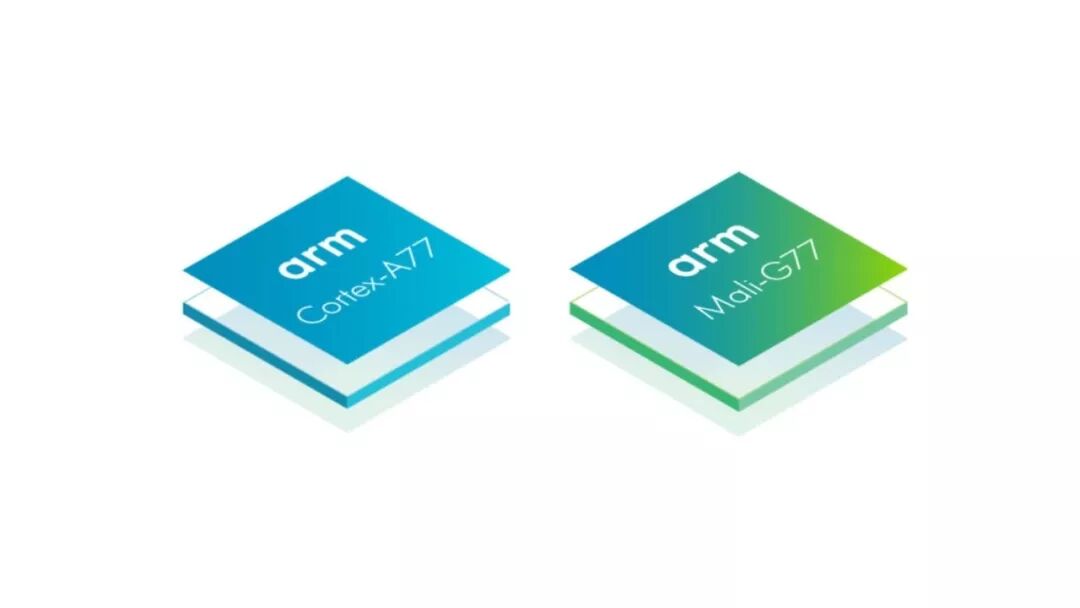
Additionally, in the CPU section, ARM’s performance is already sufficient to meet the performance experience needs of ordinary consumers. As long as chip manufacturers design the SoC architecture properly, the differences in both benchmark scores and actual experience will not be particularly large. In fact, this trend has already been evident in the Snapdragon 855, Kirin 980, and Samsung Exynos 9820 in 2019.
By the way, when purchasing a smartphone, do you value CPU performance or GPU performance more?
#InstantAction# “Letting Cars Return to Life” After several months, InstantAction once again welcomes the “luxury” car brand representative – Porsche! In this episode, the “male lead” Maowen is flamboyant, choosing only convertible cars for no other reason than style, even the flamboyant Old Wang feels inferior. As a loyal fan of ZEALER, Maowen, in order to reward Old Wang for accompanying him to pick up a new car, even gave his precious “first time” to Old Wang? What is this “first time”? Click to find out in this episode!
Open the ZEALER mini-program to watch the video
*Users of the 100,000-person evaluation club can join QQ group: 631042704
(Please provide your account UID when joining the group)
Non-members can join the official ZEALER community group: 831137393
